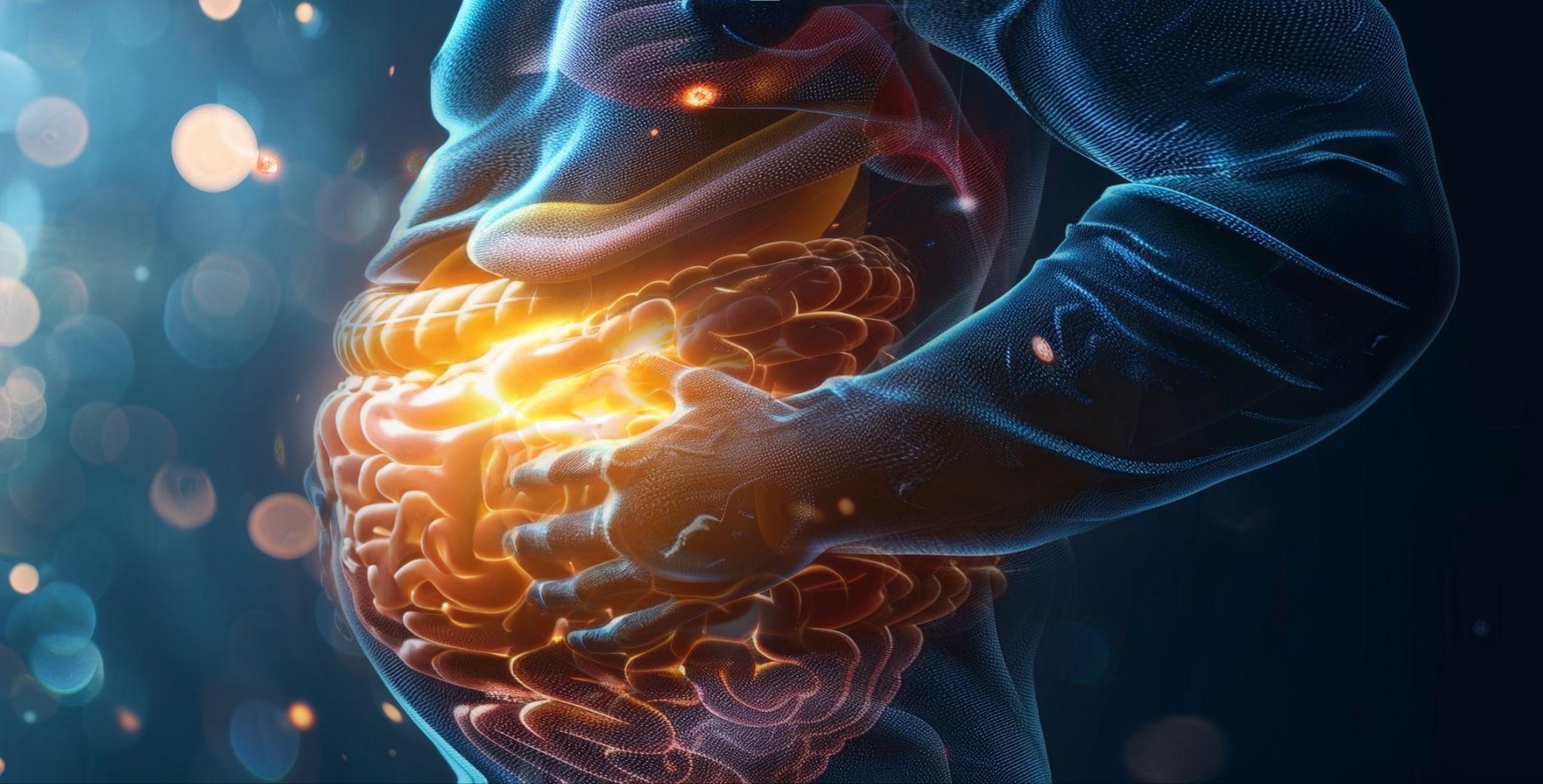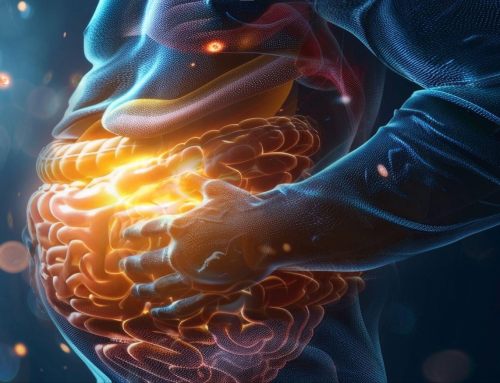Microbiome Manipulations to Prevent Neurodegenerative Diseases
The risk of having a neurodegenerative disease rises as age increases (1), and as a large group of people in the U.S. population ages, the potential health impact is alarming. Parkinson’s and Alzheimer’s are the most prevalent neurodegenerative diseases in the United States, with about 6 million people living with Alzheimer’s and 1 million living with Parkinson’s in 2022 (2).
Neurodegenerative diseases involve nerve cells that begin to lose functionality (degenerate) and eventually die. This progressive loss of functionality results in the progressive deterioration of motor, sensory, or cognitive abilities. There is no identified cure for such diseases, though researchers are looking at different ways to stall or reverse the degenerative processes. Fortunately, the understanding of neurodegeneration is evolving simultaneously, aided by advances in technology and scientific methodologies. As a result of multi-disciplined studies that include genomics, metagenomics, epigenomics, metabolomics, and transcriptomics, the gut microbiome is emerging as a way to manipulate health, including the prevention of neurodegenerative diseases.
Inflammation and oxidative stress are two underlying mechanisms of progressive nerve cell death contributing to neurodegeneration. Although these mechanisms can occur in the brains of people with a healthy blood-brain barrier (BBB), the degenerative processes in the brain can be exacerbated by a compromised BBB. Studies using Positron Emission Tomography (PET scans) and various biomarkers have established connections between chronic inflammatory conditions in the brain referred to as “neuroinflammation” in Alzheimer’s, Parkinson’s, and Huntington’s diseases (3). Degeneration of the dopaminergic neurons in the substantia nigra tissues due to sustained inflammation is so highly correlated to Parkinson’s that they could be used as biomarkers for the disease (4).
Researchers have studied the relationship between oxidative stress and neurodegeneration for a long time (5). Oxidative stress occurs when an imbalance develops between the creation of reactive oxygen species (ROS, also known as “free radicals”) and the scavengers of free radicals (6). The high levels of ROS exceed the body’s ability to detoxify them, allowing them to do damage to neuronal cells in diseases such as Alzheimer’s. Recently, anti-oxidant compounds such as anthocyanins have been studied to see if they can prevent or at least intervene in the neurodegenerative processes involving oxidative stress (7).
Taking the scientific literature as a whole, it would make sense that any strategies that reduce neural inflammation and oxidative stress would also provide solid interventions in the progression of neurodegenerative diseases such as Alzheimer’s and Parkinson’s. What makes this whole subject even more interesting is the relationship of the gut microbiome to inflammation and oxidative stress in these diseases. Indeed, accusatory fingers are pointing to gut inflammation as being a direct contributor to neuronal death via the gut-brain axis (8). However, whatever can be a driver of disease can also be a tool for intervention.
What Uniquely Qualifies the Gut Microbiome as a Tool of Intervention?
Advances in computing power and Whole Genome Sequencing drive the study of the microbiota (the microorganisms of the gut) and its genetic material, known as the microbiome. The field of metagenomics is continually conducting genetic analysis of the microbiome, combining it with other areas such as mass spectrometry, transcriptomics, and metabolomics to determine what influences the microbiome and what gets influenced by it.
It is now well-established in the scientific literature that bi-directional communication exists between the brain and the gut. The Enteric Nervous System (ENS), a vast mesh of neurons embedded directly into the gastrointestinal system, communicates via the vagus nerve to the brain. The brain uses the same structures to communicate back to the gut, so the communication flow is bidirectional (9). The short name for this rather lengthy and involved communication process is the “Gut-Brain Axis,” or GBA.
However, an additional layer to the bidirectional communication between the gut and the brain involves the gut microbiome – called the brain-gut-microbiome (BGM) axis. The microbiome can affect gut-brain communication in multiple ways, including using the direct connections of the ENS (10) to the brain, but also by producing short-chain fatty acids (SCFAs) that act on faraway targets such as the brain (11).
The Microbiota / SCFA Link
Microorganisms in the microbiome act upon dietary fiber, creating SCFAs. Three types of SCFAs are propionate, butyrate, and acetate. Each of these substances has specific actions and receptors on many types of cells in the body. Studies have shown that the actions of various SCFAs can modulate the immune system and have a positive effect on neuroplasticity (12).
One of the ways SCFAs interact with the immune system is to bind to an immune cell at the G-protein coupled receptors (GPCRs), which respond to the chemical information with a series of cellular reactions. For example, these immune cells may release anti-inflammatory cytokines (signaling molecules made up of small proteins involved in the immune system) or other immune-regulating substances. Conversely, SCFAs can also inhibit the creation of pro-inflammatory cytokines, with the net effect of reducing inflammation.
The SCFA sodium butyrate, for example, has two anti-inflammatory actions. It can increase IL-10, an anti-inflammatory cytokine that suppresses pro-inflammatory cytokines. It can also inhibit IL-12, which is inflammatory (13).
One of the SCFAs, propionic acid, was correlated with reduced pro-inflammatory cytokine Th1, and increased functionality of T regulatory cells (Tregs), which produce anti-inflammatory cytokines and encourage tissue repair. This impressive study showed that three years of supplementation of propionic acid reduced brain atrophy in patients with the condition of Multiple Sclerosis, which is both autoimmune and neurodegenerative (12).
Additionally, SCFAs help maintain the tight junctions of the blood-brain barrier (BBB), which keep toxins and other potentially hazardous chemicals from moving from the bloodstream into the brain. SCFAs do this by binding to receptors on the tight junctions, causing particular proteins to be released, fortifying the barrier. In this way, a healthy microbiome that produces SCFAs is neuroprotective.
Note, the same processes that help protect the BBB are also the same ones that protect the gut mucosal barrier. Indeed, a gut suffering from dysbiosis (imbalance) may increase the risks of a compromised BBB and neurodegenerative disease.
Inducing the Microbiome to Aid in Being Neuroprotective
There are multiple ways to manipulate the microbiome to cause a cascade of neuroprotective actions, resulting in less inflammation and oxidative stress. Studies focus on the inputs to (and outputs from) the microbiome and trace the effects to the brain. A couple of these approaches to manipulating the microbiome are attractive because the inputs are dietary in nature. The mere act of changing what one eats has measurable effects on the brain. The other manipulation of the microbiota is interesting because it’s the scientific equivalent of “fake it till you make it,” implanting fecal matter with favorable microbial species into the intestines of the microbiome-challenged.
Microbiome Manipulation #1 – Consume a Mediterranean Diet
The Mediterranean diet has been deemed healthy by several entities now, including the CDC (14) and the Cleveland Clinic (15). The Mediterranean eating style mimics the diets of the countries along the Mediterranean sea. They don’t all eat the same things, but they do have many foods in common, including (14):
- A high volume of fresh vegetables, fruits, beans, whole grains, and nuts
- The use of extra virgin olive oil
- Reduced amounts of red meat and dairy
- Very few processed foods
Many elements in the Mediterranean diet (MD) are anti-inflammatory in nature. For example, extra virgin olive oil contains polyphenols, compounds that have been studied for their ROS scavenging properties (16), prevention of metabolic disorders and cardiovascular disease (16), and reduction of the inflammation marker C-reactive protein (17).
Notably, a year-long study of the MD on “non-frail” or “pre-frail” subjects showed a shift in the microbiome that included an increase in SCFAs (18) which we know from other studies are significant drivers of reducing inflammation. A year of the MD also reduced their frailty scores and improved their cognitive function. Additionally, these subjects saw a decrease in the inflammatory marker C-reactive protein. Regarding the microbiome, this study saw that several specific bacterial taxa were enriched by the MD intervention, stepping into keystone positions and being associated with reduced frailty. Other bacterial taxa were associated with frailty.
A randomized clinical trial in 2015 also associated the antioxidant-rich foods of the MD (plus olive oil or nuts) with an improvement in cognitive function as measured by various cognitive tests and seemed to halt cognitive deterioration.
Microbiome Manipulation #2: Consume Probiotics or Prebiotics
Another well-studied element that can shift the microbiota is probiotics. Probiotics are beneficial microorganisms, usually bacteria, that lend some health benefit to the host when eaten or used on the skin (19). Probiotics can improve the integrity of the gut lining, reduce inflammation, prevent erosion of the gut and brain barriers, and prevent the spread of inflammation in the brain and neurodegeneration (1). Particular beneficial genera of bacteria are Bifidobacterium and Lactobacillus. Many studies have been performed on these two genera, and they are often included in probiotic supplement formulas.
Bifidobacterium strains have anti-inflammatory properties which can counter inflammatory cytokines made by macrophages, which, if left unchecked, might cause damage to healthy tissue (20). These anti-inflammatory properties counter the chronic inflammatory conditions that become precursors to neuronal death.
Hashim and Makpol mention four probiotic studies that, combined, offer evidence of shifting microbiome distribution of taxa, counter inflammatory IL-6, lower tumor necrosis factor, and enhance cognitive function (1). These findings fortify other conclusions that probiotics are valuable tools in countering mechanisms that drive neurodegenerative diseases.
Fermented foods are excellent sources of a wide variety of probiotics. Fermented foods are often preferred over nutritional supplements because they are “live” food with active bacteria cultures. In one randomized control trial, healthy subjects were fed up to 6 portions of fermented foods a day. Not only did the addition increase the microbiome’s diversity of bacteria, but it also reduced the pro-inflammatory cytokine IL-6 (21).
While probiotics are beneficial bacteria, prebiotics are non-digestible carbohydrates that feed beneficial bacteria. Prebiotics are typically fermented in the gut by the microbiota, and converted into SCFAs, which then work with the immune system to reduce inflammation by triggering Treg cells, inhibit pro-inflammatory cytokines, or improve gut barrier function (22).
Microbiome Manipulation #3: Fecal Microbiota Transplant (FMT)
FMT alters the microbiota rather directly, as it involves transplanting fecal matter from a healthy donor to a subject experiencing issues with their microbiome. The idea is that adding the microorganisms from the healthy donor will shift whatever caused the unhealthy microbiome in the receiver. The microbial diversity and the healthy functioning of the microbiome can be restored in this manner.
Some preclinical studies using animals showed that FMT did indeed help the microbiome function and had the added benefit of increasing the plasticity of neuronal synapses and restoring cognitive losses (1). So, FMT seems to be a viable end-run around whatever issue caused the dysbiosis (imbalanced microbiome) and can behave just as a healthy microbiome would if the transplant is performed correctly.
There are some risks with FMT, and screening donors has to be done with care because health benefits are not the only thing that can pass to the recipient. Stool tests use various modern techniques, such as 16S RNA gene sequencing and quantitative PCR, to determine the taxonomy of microbiome organisms in feces and the ratios between the phyla. As the databases for these technologies grow and the science matures, FMT will become less risky and much more powerful. Advanced techniques, for example, would allow the capturing of microbes in the donor that would produce the preferable compounds in the receiver, such as the SCFA butyrate (23).
In Conclusion:
The impact of gut health on brain health is worthy of continued research, considering the expected rise in neurodegenerative diseases. We can increase our odds of maintaining good mental and physical health by finding relationships between nutrients, the reversal of cognitive decline, and the prevention of nerve cell death. There are many challenges to measuring “diet” and performing reproducible studies on the microbiome. Still, the plant world’s marvelous array of compounds – polyphenols, catechins, various acids – provide an almost infinite variety of dietary inputs to explore. Knowing which inputs can nudge the microbiome into reducing inflammation, protecting the blood-brain barrier, and preventing neurodegeneration would help create a potent list of dietary recommendations. (Note, the current list of helpful dietary inputs, such as the Mediterranean diet and fermented foods, looks remarkably similar to what our grandparents and great-grandparents ate before the advent of processed and artificial foods.) Many people have damaged microbiomes, so it is good to know there is a fallback measure in fecal transplanting should the microbiome need a stronger nudge in the right direction. Indeed as the -omics and the studies of the microbiome advance, FMT will not be the end of the story.
Sources:
- Hashim HM, Makpol S. A review of the preclinical and clinical studies on the role of the gut microbiome in aging and neurodegenerative diseases and its modulation. Front Cell Neurosci. 2022 Nov 3;16:1007166. doi: 10.3389/fncel.2022.1007166. PMID: 36406749; PMCID: PMC9669379.
- Neurodegenerative Diseases [Internet]. National Institute of Environmental Health Sciences. U.S. Department of Health and Human Services; [cited 2023Jan2]. Available from: https://www.niehs.nih.gov/research/supported/health/neurodegenerative/index.cfm
- Schain M, Kreisl WC. Neuroinflammation in Neurodegenerative Disorders-a Review. Curr Neurol Neurosci Rep. 2017 Mar;17(3):25. doi: 10.1007/s11910-017-0733-2. PMID: 28283959.
- Marogianni C, Sokratous M, Dardiotis E, Hadjigeorgiou GM, Bogdanos D, Xiromerisiou G. Neurodegeneration and Inflammation-An Interesting Interplay in Parkinson’s Disease. Int J Mol Sci. 2020 Nov 10;21(22):8421. doi: 10.3390/ijms21228421. PMID: 33182554; PMCID: PMC7697354.
- Moreira PI, Smith MA, Zhu X, Nunomura A, Castellani RJ, Perry G. Oxidative stress and neurodegeneration. Ann N Y Acad Sci. 2005 Jun;1043:545-52. doi: 10.1196/annals.1333.062. PMID: 16037277.
- Betteridge DJ. What is oxidative stress? Metabolism. 2000 Feb;49(2 Suppl 1):3-8. doi: 10.1016/s0026-0495(00)80077-3. PMID: 10693912.
- Ali T, Kim T, Rehman SU, Khan MS, Amin FU, Khan M, Ikram M, Kim MO. Natural Dietary Supplementation of Anthocyanins via PI3K/Akt/Nrf2/HO-1 Pathways Mitigate Oxidative Stress, Neurodegeneration, and Memory Impairment in a Mouse Model of Alzheimer’s Disease. Mol Neurobiol. 2018 Jul;55(7):6076-6093. doi: 10.1007/s12035-017-0798-6. Epub 2017 Nov 23. PMID: 29170981.
- Marogianni C, Sokratous M, Dardiotis E, Hadjigeorgiou GM, Bogdanos D, Xiromerisiou G. Neurodegeneration and Inflammation-An Interesting Interplay in Parkinson’s Disease. Int J Mol Sci. 2020 Nov 10;21(22):8421. doi: 10.3390/ijms21228421. PMID: 33182554; PMCID: PMC7697354.
- Mayer EA. Gut feelings: the emerging biology of gut-brain communication. Nat Rev Neurosci. 2011 Jul 13;12(8):453-66. doi: 10.1038/nrn3071. PMID: 21750565; PMCID: PMC3845678.
- Bauer KC, Huus KE, Finlay BB. Microbes and the mind: emerging hallmarks of the gut microbiota-brain axis. Cell Microbiol. 2016 May;18(5):632-44. doi: 10.1111/cmi.12585. Epub 2016 Mar 31. PMID: 26918908.
- Author links open overlay panelSofiaCussottoabKiran V.SandhuaTimothy G.DinanacJohn F.CryanabPersonEnvelope, SofiaCussottoab, a, b, V.Sandhua K, G.Dinanac T, et al. The neuroendocrinology of the microbiota-gut-brain axis: A behavioural perspective [Internet]. Frontiers in Neuroendocrinology. Academic Press; 2018 [cited 2023Jan2]. Available from: https://www.sciencedirect.com/science/article/abs/pii/S0091302218300396
- Yu J, Cheng Q, He F, Meng F, Yu Y, Xu C, Wen X, Hong L, Gao J, Li J, Pan G, Li MD, Luo B. Altered Intestinal Microbiomes and Lipid Metabolism in Patients With Prolonged Disorders of Consciousness. Front Immunol. 2022 Jul 13;13:781148. doi: 10.3389/fimmu.2022.781148. PMID: 35911767; PMCID: PMC9326017.
- Säemann MD, Böhmig GA, Osterreicher CH, Burtscher H, Parolini O, Diakos C, Stöckl J, Hörl WH, Zlabinger GJ. Anti-inflammatory effects of sodium butyrate on human monocytes: potent inhibition of IL-12 and up-regulation of IL-10 production. FASEB J. 2000 Dec;14(15):2380-2. doi: 10.1096/fj.00-0359fje. PMID: 11024006.
- Healthy eating for people with diabetes [Internet]. Centers for Disease Control and Prevention. Centers for Disease Control and Prevention; 2022 [cited 2023Jan2]. Available from: https://www.cdc.gov/diabetes/library/features/ mediterranean-style-eating.html
- Mediterranean diet [Internet]. Cleveland Clinic. [cited 2023Jan2]. Available from: https://my.clevelandclinic.org/health/articles/16037-mediterranean-diet
- De Santis S, Cariello M, Piccinin E, Sabbà C, Moschetta A. Extra Virgin Olive Oil: Lesson from Nutrigenomics. Nutrients. 2019 Sep 4;11(9):2085. doi: 10.3390/nu11092085. PMID: 31487787; PMCID: PMC6770023.
- Estruch R, Martínez-González MA, Corella D, Salas-Salvadó J, Ruiz-Gutiérrez V, Covas MI, Fiol M, Gómez-Gracia E, López-Sabater MC, Vinyoles E, Arós F, Conde M, Lahoz C, Lapetra J, Sáez G, Ros E; PREDIMED Study Investigators. Effects of a Mediterranean-style diet on cardiovascular risk factors: a randomized trial. Ann Intern Med. 2006 Jul 4;145(1):1-11. doi: 10.7326/0003-4819-145-1-200607040-00004. Erratum in: Ann Intern Med. 2018 Aug 21;169(4):270-271. PMID: 16818923.
- Ghosh TS, Rampelli S, Jeffery IB, Santoro A, Neto M, Capri M, Giampieri E, Jennings A, Candela M, Turroni S, Zoetendal EG, Hermes GDA, Elodie C, Meunier N, Brugere CM, Pujos-Guillot E, Berendsen AM, De Groot LCPGM, Feskins EJM, Kaluza J, Pietruszka B, Bielak MJ, Comte B, Maijo-Ferre M, Nicoletti C, De Vos WM, Fairweather-Tait S, Cassidy A, Brigidi P, Franceschi C, O’Toole PW. Mediterranean diet intervention alters the gut microbiome in older people reducing frailty and improving health status: the NU-AGE 1-year dietary intervention across five European countries. Gut. 2020 Jul;69(7):1218-1228. doi: 10.1136/gutjnl-2019-319654. Epub 2020 Feb 17. PMID: 32066625; PMCID: PMC7306987.
- Probiotics: What you need to know [Internet]. National Center for Complementary and Integrative Health. U.S. Department of Health and Human Services; [cited 2023Jan2]. Available from: https://www.nccih.nih.gov/health/probiotics-what-you-need-to-know
- Bonfili L, Cecarini V, Berardi S, Scarpona S, Suchodolski JS, Nasuti C, Fiorini D, Boarelli MC, Rossi G, Eleuteri AM. Microbiota modulation counteracts Alzheimer’s disease progression influencing neuronal proteolysis and gut hormones plasma levels. Sci Rep. 2017 May 25;7(1):2426. doi: 10.1038/s41598-017-02587-2. PMID: 28546539; PMCID: PMC5445077.
- Ribeiro G, Ferri A, Clarke G, Cryan JF. Diet and the microbiota – gut – brain-axis: a primer for clinical nutrition. Curr Opin Clin Nutr Metab Care. 2022 Nov 1;25(6):443-450. doi: 10.1097/MCO.0000000000000874. Epub 2022 Sep 14. PMID: 36102353; PMCID: PMC9553262.
- Peterson CT. Dysfunction of the Microbiota-Gut-Brain Axis in Neurodegenerative Disease: The Promise of Therapeutic Modulation With Prebiotics, Medicinal Herbs, Probiotics, and Synbiotics. J Evid Based Integr Med. 2020 Jan-Dec;25:2515690X20957225. doi: 10.1177/2515690X20957225. PMID: 33092396; PMCID: PMC7586271.
- Wilson BC, Vatanen T, Cutfield WS, O’Sullivan JM. The Super-Donor Phenomenon in Fecal Microbiota Transplantation. Front Cell Infect Microbiol. 2019 Jan 21;9:2. doi: 10.3389/fcimb.2019.00002. PMID: 30719428; PMCID: PMC6348388.












